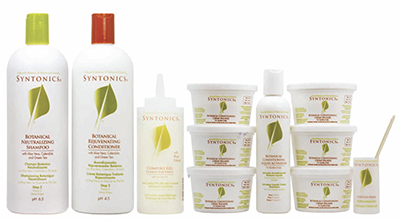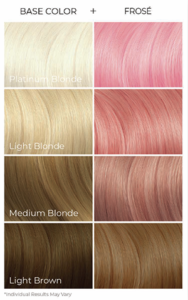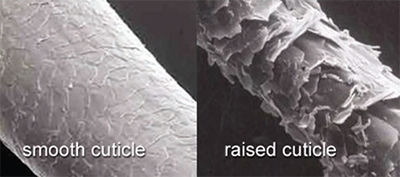Haircare Product—Hair Damage and Recovery
You find many African American customers at advanced ages at any beauty supply store. You also find a lot of female customers who lost almost all of their hair, to the extend they are practically bald, and a lot of Latinas who have frizzy hair suffering from discoloration with yellow tint. From their early ages, African American customers try hard to straighten their hair in their struggle with ingrown hair and take the toll with hair loss later. At that point, they start to look for hair growth products such as Wild Growth and Kaleidoscope products.
As you can only see the woods when you’re outside of it, you have to look at haircare products with long-term consequences in mind. Then, you will realize they consist of both poisons and cures.
Many people start working in the beauty industry with little knowledge about it. It is said that you need to work at least five years in the beauty industry to understand the products and step up for management duties. However, as a beginner, it is really tough to self-teach, nor is it feasible for business owners to educate each staff member with tens of thousands of products. It is a painstaking process to learn one at a time. The damage-vs-recovery dichotomy comes into play when you want to make it simple.
Under this scheme, you can put all haircare products into two groups. One that damages hair and scalp, a poison, and the other that attempts to recover the damages done, a cure. If you can tell just these apart, then you will have a great organizational tool that works for all haircare products. Of course, there are maintenance products that you use daily, but still the poison and cure labels can help with an easy and quick guide to the basic understanding of haircare products.
What belongs to the “poison” group?
Relaxers (perms), permanent hair dyes, bleaches, developers, texturizers, and curl boosters are representatives of this group.
You first notice the headache-inducing fume when you open one of them. These products are developed by chemists in a lab although they are offered by familiar names in the hair and beauty industry. They mix various chemical ingredients and formulate a product that can be sold over the counter. While ingredients are fairly distinctive, shampoos are also a chemical product. When they make a highly acidic product, they try to neutralize the harsh, damaging chemicals with extra beneficial ingredients. However, the basic characteristics stay the same. There is no doubt that it would damage your hair and scalp.

One of the strongest chemical products that are regularly bought and used by African Americans is a relaxer. Also known as perms, relaxers contain particularly harsh chemicals. African Americans typically have extremely curly hair that often grows into the skin resulting in ingrown hair. While the standard of beauty differs from an ethnic group to another, people who like to have straight hair often taps on the convenience of relaxers that allow them to straighten their hair at home or a salon without burdensome Brazilian Straight procedures like La Braziliana, using ultra-high heat flat irons, or weaving and gluing. Reportedly, relaxers have been used from an ancient time in Africa. The key ingredient was lye water. Lye water, a sodium hydroxide solution, has active ingredients similar to those found in hydrochloric acid or Clorox, and thus it can burn or damage the hair and scalp after repeat uses. To minimize the damages, relaxers often contain well-known beneficial ingredients like olive oil and argan oil, and they to advertise them as less damaging.

For hair colors, semi hair colors are less prone to damages, but permanent hair dyes are a different story. Semi hair colors are designed to coat the outer surface of the hair cuticle to change its appearance in color, but they are not going to be enough to turn black or brown hairs into #613, #27, or neon colors. In those situations, bleaches and permanent hair colors come into play. However, permanent hair dyes can severely damage your hair. When you bleach your hair, peroxide, called developers, is generally used. Commonly, levels 5-60 volumes are used where higher numbers denote a stronger product. The cuticle in the hair surrounds hair strands like fish scales, and the developer opens up the cuticle layer to allow coloring agents to get under the cuticles. Similarly, bleaching agents work to get rid of the natural color underneath the cuticle layer for discoloration. These processes will inevitably cause damages to the hair.

As such, it is recommended that you do not use permanent hair dyes and relaxers at the same time, but many try to catch two birds with a stone and later on rely on the hair growth products to reverse the course of hair loss. Nonetheless, recovery of damaged hair is not an easy task. Along with heat and UV damages, these toxic chemicals used to change the natural hair texture wreak havoc in the hair.
What belongs to the cure group?
The cures consists of hair repair and recovery products such as protein packs; hair mayos; hair oils; cleansing, clarifying, normalizing, neutralizing, and thickening shampoos; heat protectors; hot oil treatments; hair growth products; plant extract infused gels; shine sprays; and detangling and natural haircare products.
When you open a relaxer box kit, you would almost certainly find a deep conditioner packet. After treating your hair with relaxers and colorants, your hair becomes noticeably thinner and softer. It tells you how much damage your hair suffered. To repair the damages, you can use deep conditioning products such as a protein pack and hair mayo to enrich your hair with nutrients. Hot oil treatments are one of the bestsellers used for the same purpose.
As an example of heat damages, you will find hairdressers performing procedures on clients using blow dryers and ultra high heat flat irons in a Dominican salon. During the procedures, stylists often utilize oil sheens and heat protectors to minimize the heat damages incurred by the high heat needed for the styling. It is as if you drink a poison and a cure at the same time.
The cure group is like an open exhibit of all the natural ingredients that are known to be beneficial. Natural hair trend and the boom in natural haircare products reflect people’s desire to be confident in living without altering their natural appearance. Through the social media, people are sharing what’s good and what’s bad, and these words of mouth spread quickly among increasingly sensitive consumers.
In a closer look at the products above, they are widely used by varying individuals per personal needs, preference, habit, and knowledge. If you work at a beauty supply store, the basic knowledge about products will profoundly help your sales.
Those that damage hair, poisons, and those for recovery, cures. You may divide all haircare products into these two groups. It takes a tiny bit of extra care and effort to reach the top of this hill. Poison vs. cure—although simple, it may be a highly efficient approach to understand haircare products.